COAST's interdisciplinary team focuses on gathering the scientific data needed to provide management recommendations for our threatened coastal and marine ecosystems.
Marathon Wastewater
Underwater Transect Imagery at Boot Key Harbor, Marathon, FL on March 1, 2022
Seawater sampling in nearshore waters of upper Boot Key Harbor revealed very high concentrations of sucralose (artificial sweetener) ranging between 2,650 and 2,930 ng/L at the inshore transect site closest to the shallow mangrove fringe behind the Home Depot. These sucralose concentrations are over 10-fold higher than concentrations previously observed at Crane Point Hammock and higher than sucralose concentrations reported for tidal creeks and tributaries of the Caloosahatchee River in Ft. Myers that are heavily impacted by polluting septic systems (Brewton et al. 2022, Science of the Total Environment). These observations suggest a buoyant plume from submarine discharge of groundwaters along the mangrove fringe at Boot Key Harbor. Sucralose data gathered at Boot Key Harbor are included in Table 1 below. There is a serious concern that partially-treated wastewater from shallow injection wells at a nearby wastewater treatment facility are likely the source of these unusually high concentrations of sucralose. The extremely high concentrations of sucralose make it unlikely that this sucralose is coming from smaller scaled human wastewater inputs such as the few remaining septic tanks or cesspits in the vicinity.
Still imagery along the sucralose sampling transect on March 1, 2022 provided further evidence of wastewater impacts. The first image at the inshore end of the transect near the mangrove fringe had very high sucralose concentrations and showed heavy harmful epiphytic algal overgrowth of the benthic communities comprised of the tropical seagrass Thalassia testudinum (turtle grass) and calcified green alga Penicillus capitatus (Fig. A, B); this is symptomatic of an unhealthy nutrient-enriched, hypereutrophic environment.
The macroalgal blooms present along this transect included the nutrient pollution indicator species of green seaweed Chaetomorpha gracilis (Fig. C). Further from shore and closer to moored boats in Boot Key Harbor, the shallow turtle grass communities had lower sucralose concentrations but still had heavy algal epiphyte loads (Fig. D) and macroalgal blooms of the red nutrient indicator species Hypnea spinella (Fig. E) and the green rhizomatous seaweed Caulerpa cupressoides (Fig. F). The sampling transect ended at upper Boot Key Harbor Channel, which had numerous moored boats and the lowest sucralose concentrations along the transect. This spatial pattern indicates that the source of sucralose is near the mangrove fringe where a suspected plume from a nearby wastewater treatment facility may be located. There is clearly a greater degree of imbalance in the flora located at the inner site of Boot Key Harbor when compared to similar areas in nearshore waters of the Florida Keys not so heavily impacted by human wastewater.
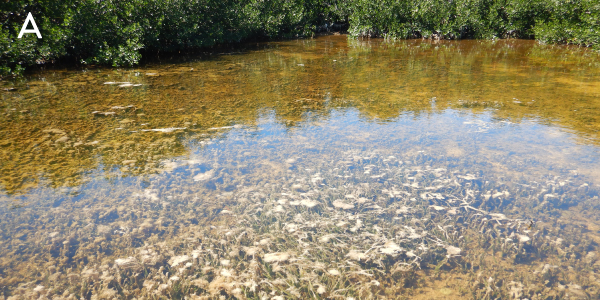
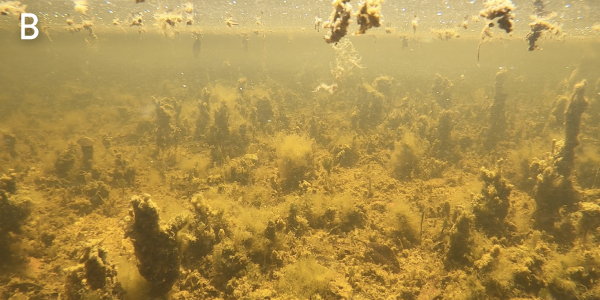



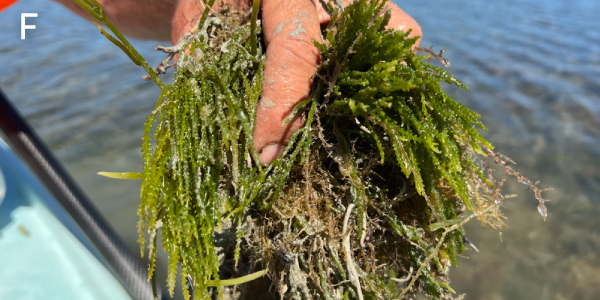
Table 1

Underwater Transect Imagery at Crane Point Hammock, Marathon Florida: August 5, 2021
Seawater sampling in nearshore waters at Crane Point Hammock has revealed sucralose concentrations over 200 ng/L, indicating a human wastewater impact. There is concern that partially-treated wastewater from shallow injection wells located at a nearby wastewater treatment facility could be the source of this sucralose.
To further examine the sampling site, COAST’s Executive Director Brian Lapointe recorded video imagery along a ~ 75 meter benthic transect taken from offshore to the onshore mangrove fringe on August 5, 2021.
Still images from the transect provided additional evidence that a buoyant groundwater plume from the shallow injection well is discharging along this coastline, resulting in contamination with nutrients and other wastewater pollutants. The first image at the offshore end of the transect (Fig. A) showed turtle grass (Thalassia testudinum) blades with heavy epiphyte loads, characteristic of nutrient-impacted waters. Moving closer to shore along the transect blooms of fine, filamentous red macroalgae and calcified green macroalgae (Halimeda sp., Penicillus sp.) became abundant, providing additional evidence of nutrient enrichment (Fig. B). Thick blooms of filamentous red macroalgae and calcified green macroalgae continued along the transect (Fig. C, D, and E); the macroalgae included scattered mounds of the green seaweed Avrainvillea nigricans f. spongiosa, a form of macroalgae associated with nutrient-rich habitats in the interior of mangrove lakes. Within 10 meters of shore, the benthos changed markedly to a thick brown, organic-rich detritus (Fig. F, G) and the water became turbid and discolored with a greyish tint (Fig. H). Little, if any, seagrass or macroalgae were present in this inshore zone and the surface water was noticeably cooler than the water on the bottom. These observations suggest a buoyant plume from submarine discharge of cooler groundwaters along the mangrove fringe at Crane Point Hammock.
The Crane Point Hammock transect data included in Table 2 below also shows the presence of substantial amounts of sucralose, but at lower concentrations that at Boot Key Harbor.
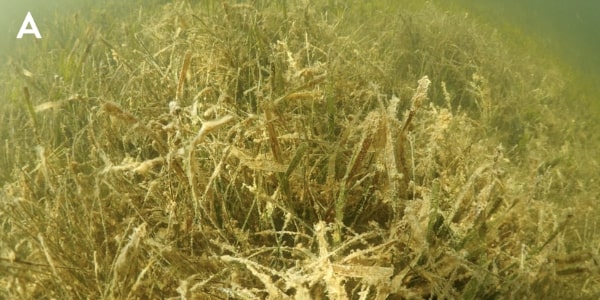





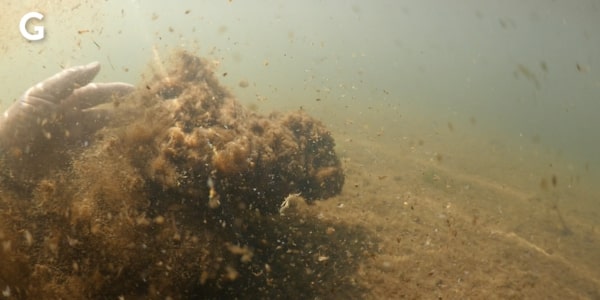
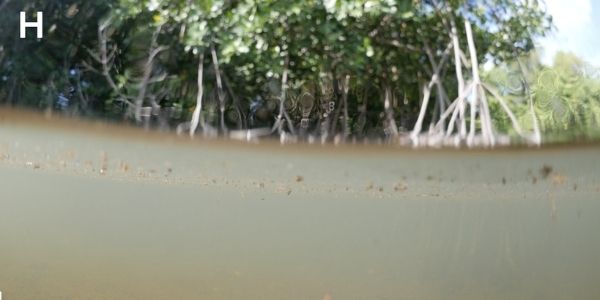
Table 2

Bar Graph #1

Bar Graph #1 shows mean (+/-SD) for sucralose concentrations at inner, middle, and outer sites along transects at Crane Point Hammock & at Boot Key Harbor. (n=3)